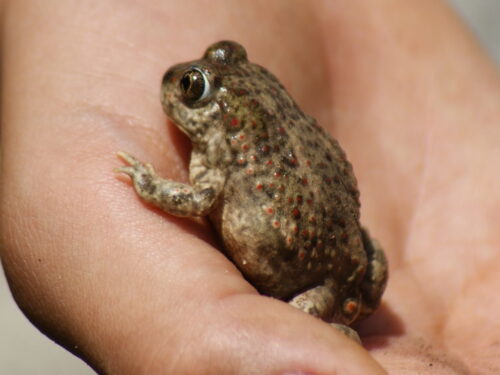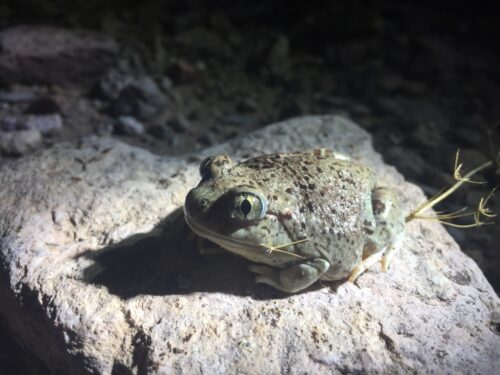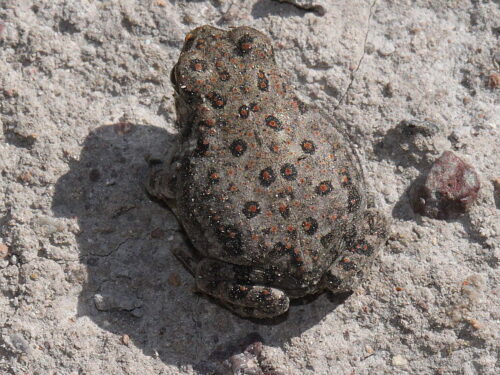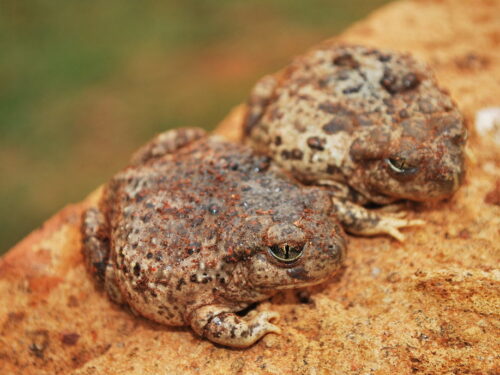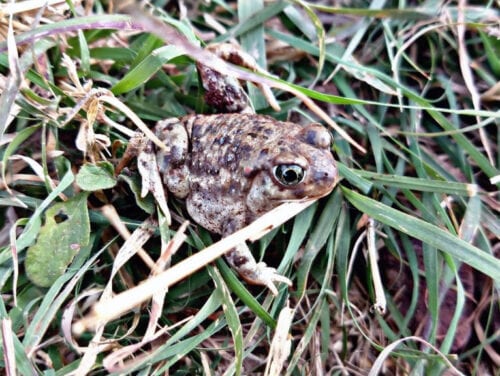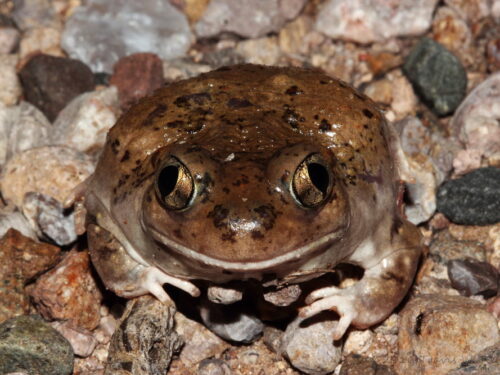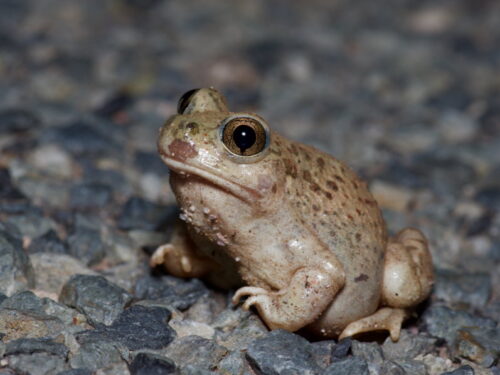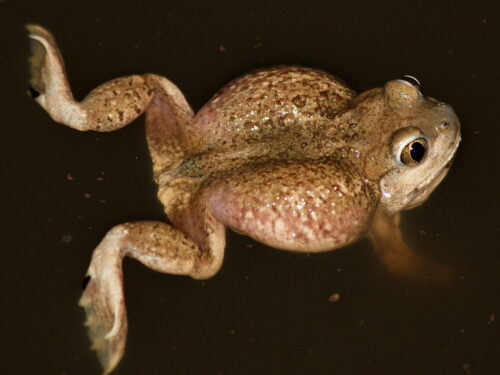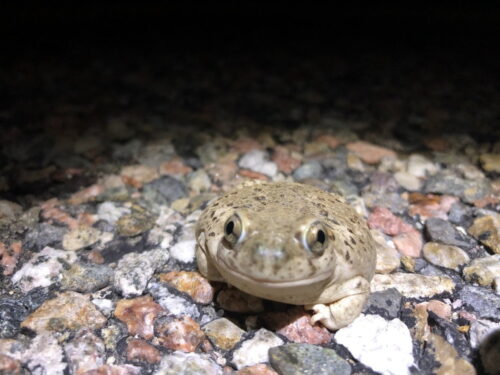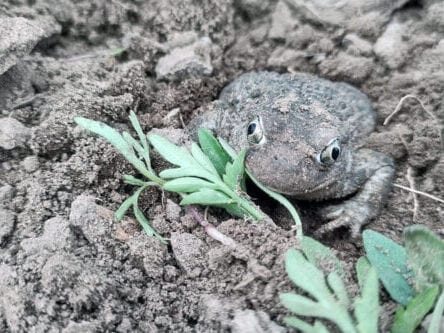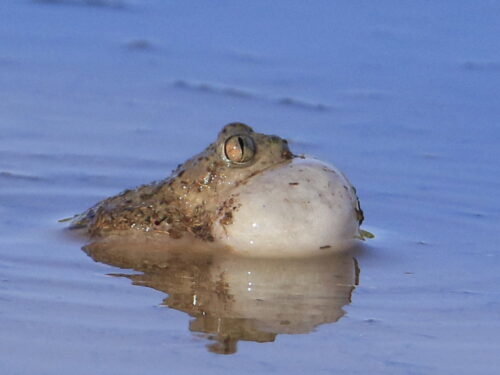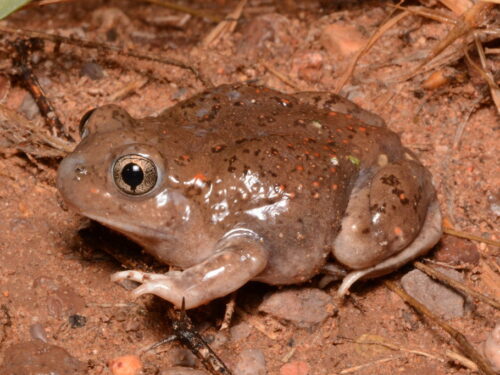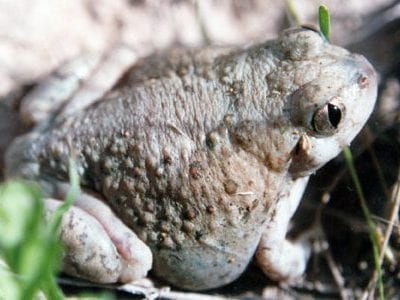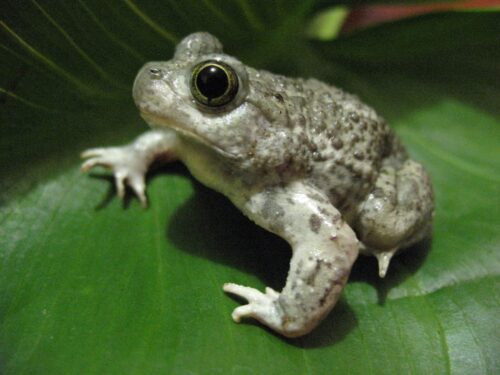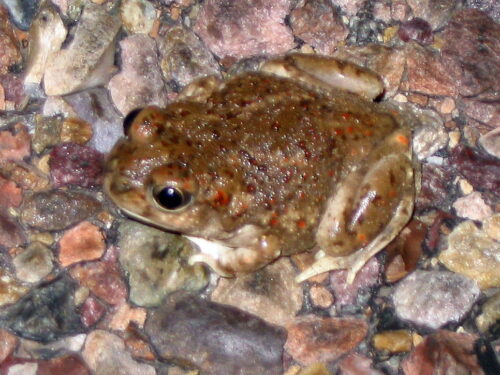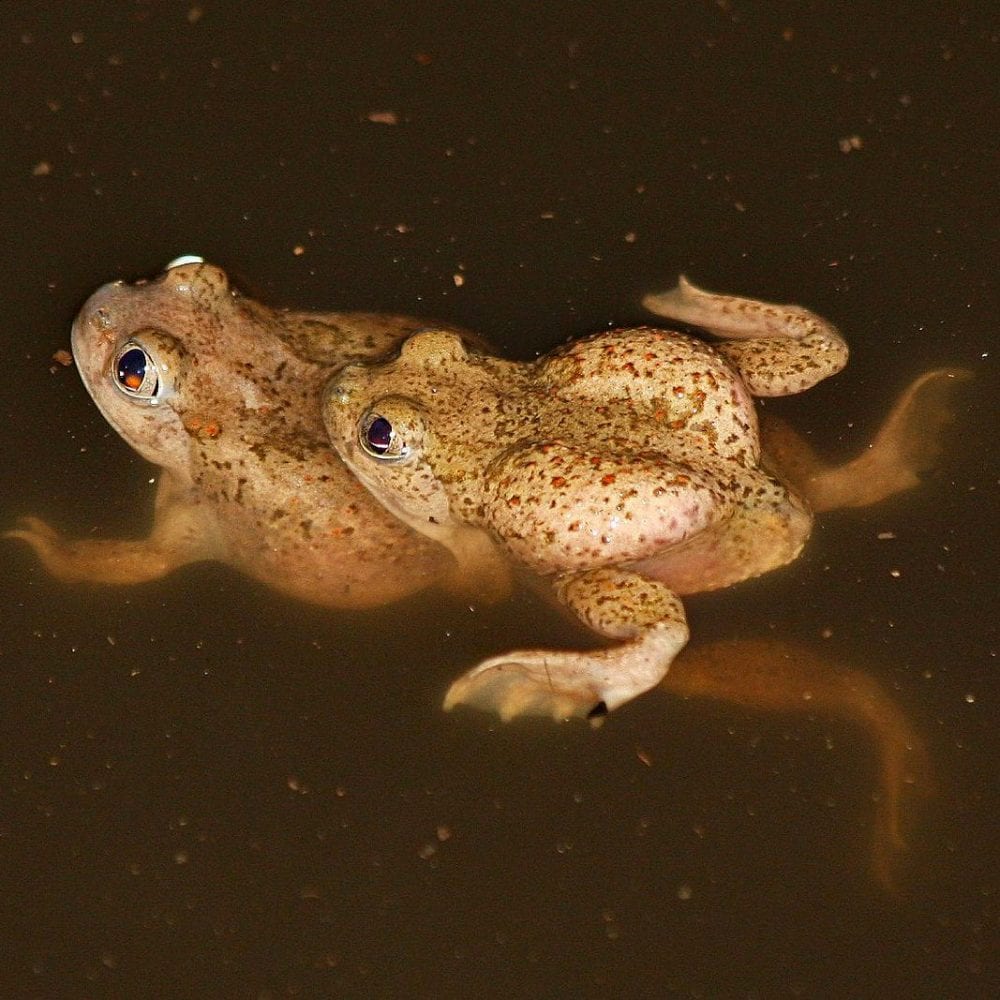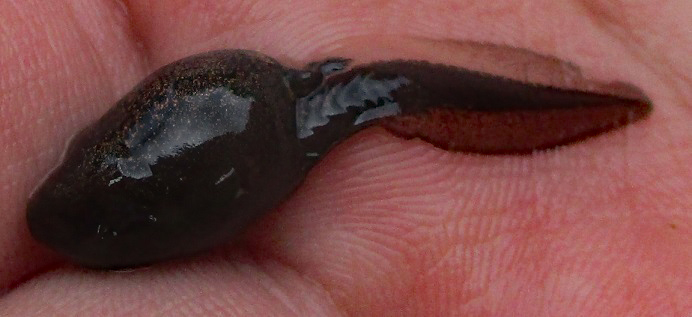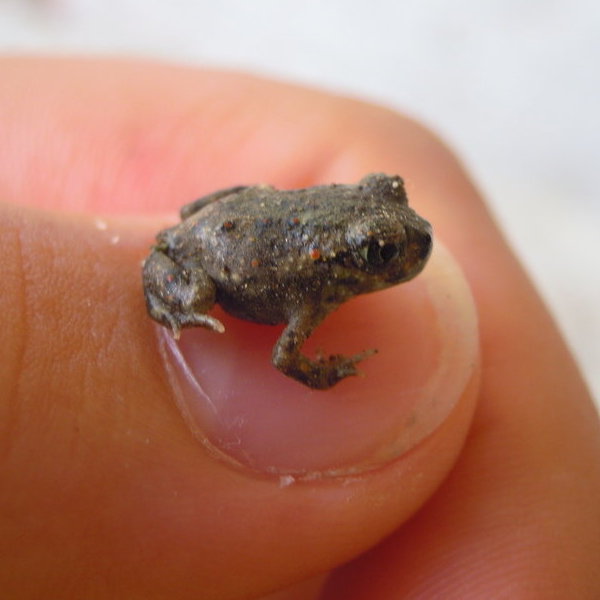New Mexico Spadefoot Toad
Also known as: Mexican spadefoot, desert spadefoot, and southern spadefoot
Scientific name: Spea multiplicata
Type: Amphibian
Family: Scaphiopodidae (American Spadefoot Toads)
Size: 1.5 to 2.5 inches
Weight: 1.7 to 3.5 ounces
Physical Description
The New Mexico spadefoot toad has a round body and relatively short legs. They are typically green, grey, or brown with a white underbelly. In addition, they often have black or orange/red spots on their back and lack a boss (protrusion) between the eyes found on other spadefoots.
One the New Mexico spadefoot toad’s distinguishing features is its large eyes with vertical pupils that sit close to the top of its head. Like other species of spadefoot, this toad has a distinctive “spade-like” projection on its hind legs. These projections which help the toad to dig in sandy soils are wedge-shaped and hard.
Rear Foot With Spade
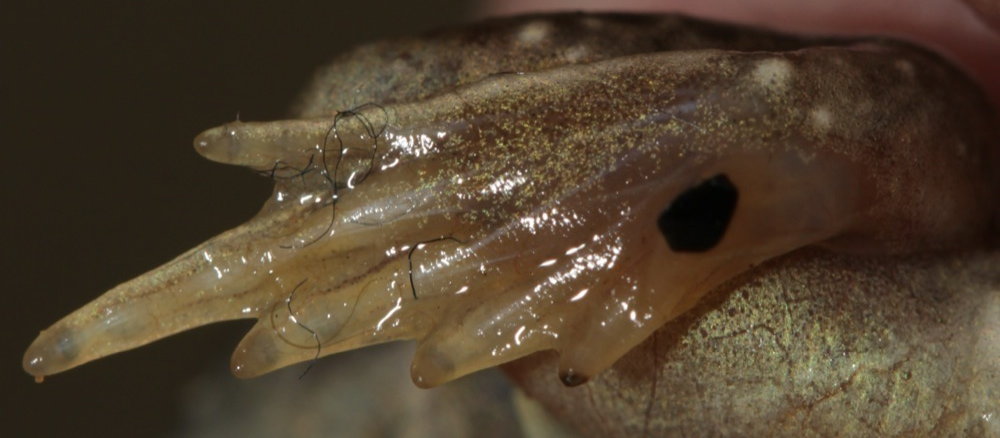
Eye With Vertical Pupil
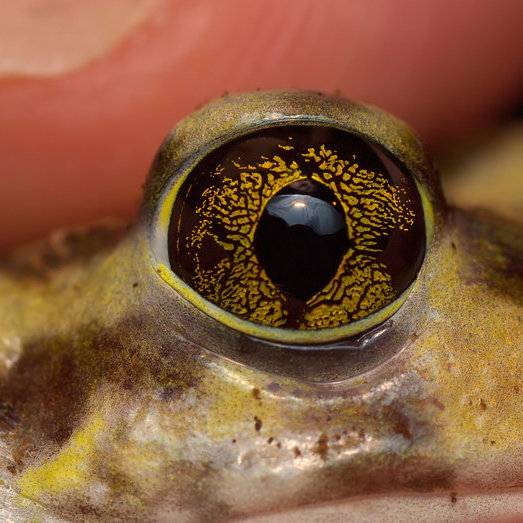
Range and Habitat
The New Mexico spadefoot toad occurs from southeastern Utah, southern Colorado, and northern Oklahoma south through Arizona, New Mexico, and western Texas. It has been documented throughout the state of New Mexico. In addition, it is found in Guerrero and Oaxaca in Mexico.
It found in a variety of habitats such as desert scrub, grasslands, coniferous woodlands, and at the edges of agricultural areas. These toads are most often found in places with soil loose enough for burrowing into and deep enough to avoid freezing temperatures.
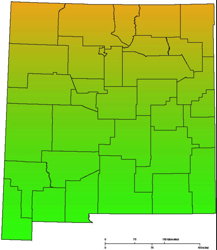
Diet
New Mexico spadefoots eat a variety of invertebrates. Their diet mainly consists of termites, ants, beetles and spiders. These toads can eat as much as half of their body weight in one night. Studies have shown that spadefoots require as few as seven feedings before they can accumulate enough fat reserves to survive for 12 months underground.
Behavior and Social Life
Like most other amphibians, New Mexico spadefoot toads spend most of the year underground. It usually occupies an underground burrow that it digs in the soft earth with its hind feet and only comes out when the summer rains fill in the low-lying areas. They then emerge to feed on insects and to breed. After breeding, they will remain active as long as conditions remain moist and warm.
New Mexico spadefoot toads have a call that sounds like a fingernail running across the teeth of a comb. Males will call from the middle of a pond while floating on the water surface.
Life Cycle
New Mexico spadefoot toads breed during the summer monsoon rains. Males attract females by calling while floating on the surface of standing water. Eggs are fertilzed by the male after they are laid. A single female lays about a 1,000 eggs on average. They are deposited in a cylindrical mass attached to submerged vegetation.
The eggs hatch in around two days. Tadpoles metamorphose in about three weeks and can occur in two morphs – the typical omnivore and the strict carnivore. The latter have broader heads and heavier muscles around the jaws. They development is sped up by their consumption of fairy shrimp.
Newly formed toadlets will leave drying pools and disperse before taking up the life of a spadefoot toad.
Ecological Role
New Mexico spadefoots consume large numbers of termites early in the rainy season, then switch to other arthropods, helping to keep these populations in check. They also help with soil aeration when digging burrows.
Interactions With Humans
When threatened, these toads can emit an odor that smells like roasted peanuts. This can cause tearing, sneezing, and a running nose if the toad is held in close contact with the face.
Interesting Facts
- In 2003 the New Mexico spadefoot toad was designated as the official State Amphibian of New Mexico.
- The New Mexico spadefoot toad is one of the only species to not be officially threatened.
- New Mexican spadefoot toads are widely spread but uncommon.
- Stock tanks and places along roads and railroad tracks where water accumulates have provided new breeding places for the toads.
- The New Mexico spadefoot can hybridize with the Plains spadefoot. So identification can be difficult in areas where their ranges overlap.
- This species (Spea multiplicata) was once classified as a subspecies of the western spadefoot toad (Spea hammondii) but subsequently has been reclassified as it own species based on morphological characteristics.
- New Mexico spadefoot toads are able to avoid those arthropods with known toxins or other chemical defenses.
- These toads probably do not maintain territories.

